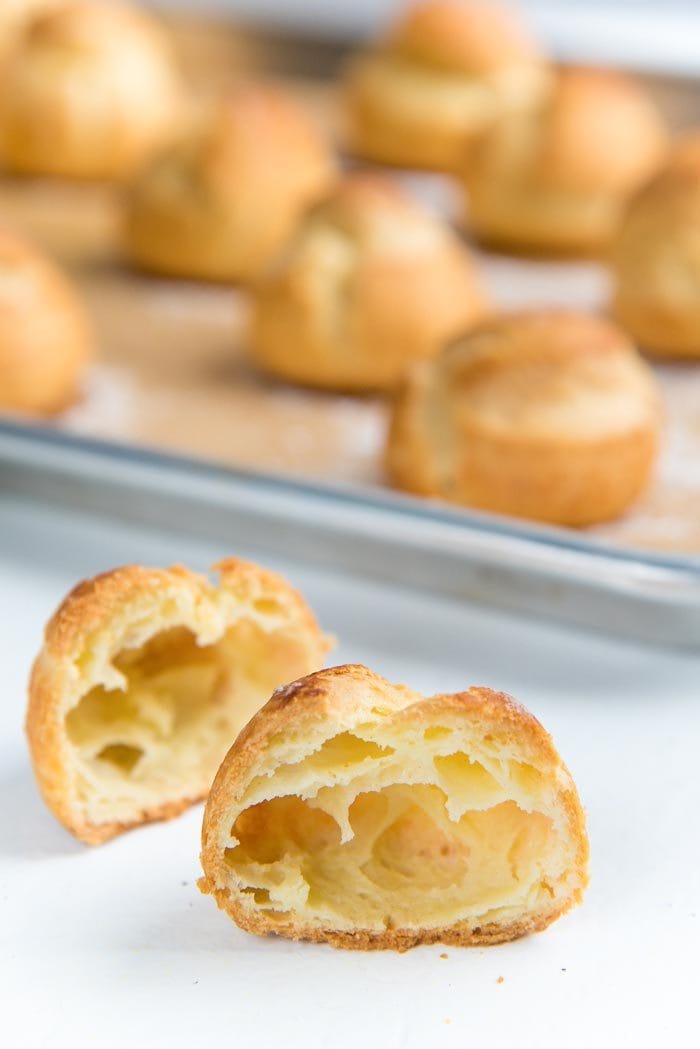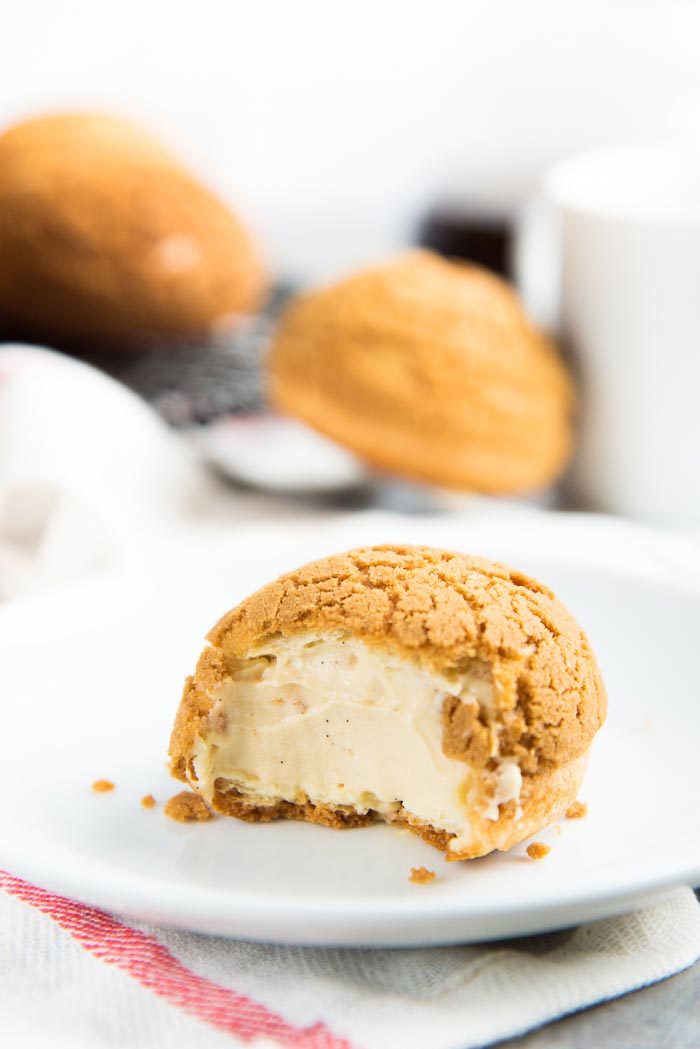Choux pastry, a culinary masterpiece hailing from France, is a versatile dough that forms the foundation of an array of delectable pastries, both sweet and savory. Its unique characteristics, including a crisp exterior and a light, airy interior, have captivated pastry enthusiasts for centuries. This comprehensive guide will delve into the intricacies of choux pastry, providing valuable insights into its preparation, troubleshooting common pitfalls, and exploring its diverse applications.
Understanding the Nature of Choux Pastry
Choux pastry, also known as pâte à choux, is a unique dough that relies on a combination of moisture and heat to achieve its distinctive texture. Unlike traditional pastries that utilize chemical leavening agents, choux pastry employs a combination of water, butter, flour, and eggs to create a steam-filled interior that expands during baking, resulting in a hollow pastry shell.
The Art of Crafting Perfect Choux Pastry
Essential Ingredients:
- Water
- Butter
- Flour
- Eggs
Step-by-Step Instructions:
- Combine Wet Ingredients: In a saucepan, bring water, butter, and salt to a boil.
- Incorporate Flour: Remove the saucepan from heat and add flour all at once. Stir vigorously until a cohesive dough forms.
- Cook the Dough: Return the saucepan to low heat and continue stirring until the dough pulls away from the sides of the pan and forms a film on the bottom.
- Cool the Dough: Transfer the dough to a bowl and allow it to cool to approximately 160°F (71°C).
- Incorporate Eggs: Gradually add eggs to the dough, mixing well after each addition. The dough should reach a glossy, pipeable consistency.
Troubleshooting Common Choux Pastry Challenges
Problem: Flat or Soggy Pastry Shells
- Cause: Insufficient cooking of the dough or excessive moisture in the shells.
- Solution: Cook the dough thoroughly before adding eggs. Avoid overfilling the shells and prick them with a skewer or knife after baking to release steam.
Problem: Cracked or Irregular Pastry Shells
- Cause: Undissolved solids in the dough, high baking temperature, or improper piping technique.
- Solution: Ensure that all ingredients are dissolved before cooking the dough. Bake the pastry at a lower temperature throughout the baking process. Pipe the dough smoothly and consistently, avoiding ripples or air bubbles.
Problem: Dry or Crumbly Pastry Shells
- Cause: Too much flour or not enough eggs.
- Solution: Adjust the flour-to-egg ratio to achieve a glossy, pipeable dough consistency. Avoid overbaking the pastry.
Sweet and Savory Applications of Choux Pastry
Choux pastry serves as the foundation for a myriad of sweet and savory treats. Some popular applications include:
Sweet:
- Profiteroles (Cream Puffs)
- Éclairs
- Churros
- Beignets
- Croquembouche
Savory:
- Gougères (Cheese Puffs)
- Savory Éclairs
- Vol-au-vents
- Cheese Straws
- Onion Rings
Choux pastry is a culinary canvas that invites experimentation and creativity. By mastering the techniques outlined in this guide, you can elevate your baking skills and create delectable pastries that will impress family and friends alike. Whether you prefer the sweet indulgence of profiteroles or the savory delight of gougères, choux pastry offers endless possibilities for culinary exploration.
Why are my pastry shells flat, soft, and soggy?
Are your eclairs sunken concave bottoms, or have the shells of your profiteroles collapsed? Are your choux pastry shells not round, hollow, and flawless like those you see in bakeries?
So what causes this?
Chances are the dough was too wet and runny. The batter most likely lost its shape when piped out (look at the above photo, where the runny batter kind of spreads out). This indicates that there is either too little flour or too much liquid (butter, eggs, or water).
Another factor contributing to flat choux shells is taking the pastry out of the oven too soon. They won’t rise correctly if they were initially soggy. However, even if they do rise, too much moisture in the shell will cause them to collapse when they cool, especially if you remove them from the oven too soon. When the shells cool down, they collapse because they did not have enough time to form a stable crust.
To enable the shells to dry out, you must pierce them close to the end of the baking process or even after. If you don’t, as it cools, the hot, humid air will cause the soft shell to collapse.
I will never, ever add raw flour to a runny choux pastry dough. Repeat after me: NEVER, ADD EXTRA FLOUR! This is what I see recipes recommending, and it’s a surefire way to go wrong.
So then what do you do?
Combine water, salt, butter, flour, and cooked dough to make another half batch (omit the eggs!). After preparing that portion of the dough in a saucepan and getting the desired consistency, allow it to cool (covered). Gradually incorporate the chilled dough into the soft dough, blending thoroughly, until the desired pipeable consistency is achieved. It always works like a charm!.
If so, bake them for a little while longer (until the shell is a darker brown color). Raise the oven temperature if you baked them at 350°F or lower.
And never forget to use a sharp knife or skewer to poke holes in your baked choux pastry shells (profiteroles or eclairs) so that the moisture inside the cases can escape and the shells can dry out. This keeps the shells from collapsing and helps you achieve flawless choux pastry shells. In order to aid in the pastry shells’ drying out, I also like to poke them in the final few minutes of baking.
According to some recipes, you should leave the oven door partially open while the choux pastry shells dry out. You can also do that, but it can be laborious if you need to bake another batch of choux pastry. So allow the choux pastry to cool in a draft-free, warm place. I like to keep them in the kitchen, where the oven has been working to keep things warm.
For more information about eclairs, check out my post here.
So what do we know about choux pastry (Also known as Pâte à Choux)?
I have a particular place in my heart for choux pastry because I used to eat a lot of eclairs and cream puffs when I was younger. Furthermore, I think it’s pretty clever that choux pastry rises without the need of a chemical raising agent. Rather, it uses the water and eggs to release the trapped air and moisture in the dough.

As one of the first pastries I learned to make, choux pastry, I had long since convinced myself that I was an expert in the art. However, one day I just wasn’t able to get it right and I couldn’t figure out why. I then began experimenting with various configurations until I eventually figured out what worked for me. This perfect choux pastry guide is for you if your choux pastry recipe isn’t working every time. This article will explain WHY and HOW choux pastry functions and provide you with lots of troubleshooting advice.

CHOUX PASTRY MASTERCLASS: Sweet and Savory Puffed Treats, from Éclairs to Gougères
FAQ
What type of pastry is choux pastry?
What is choux pastry supposed to taste like?
What is savory choux pastry called?
What are the qualities of choux pastry?
Is choux pastry easy to make?
(Nutrition information is calculated using an ingredient database and should be considered an estimate.) Choux pastry, or pâte à choux, makes everything from cream puffs, profiteroles, and éclairs to Parisian gnocchi, churros, and beignets. It’s easy to make, as long as you understand the process.
What to eat with choux pastry?
These light and eggy cheese puffs are channeling your favorite bar snack. Choux pastry is easy to make and incredibly versatile. Use it to make cream puffs, gougères, Paris-Brest, and other sweet and savory treats.
Can you make choux pastry without sugar?
Sugar and salt – You can make choux pastry perfectly well without sugar or salt, but for me, they add flavour and season the dough. Sugar adds sweetness but also helps colour the dough. The salt enhances the sweetness whilst also balancing it out. * Be sure to see the recipe card below for the full ingredients list & instructions!
What are the different types of choux pastry?
Simple Chouquettes – the simplest use for choux pastry. Pastry shells are topped with pearl sugar and dusted in icing sugar for added sweetness. Profiteroles – choux buns filled with vanilla pastry cream, whipped cream or ice cream and drizzled in chocolate ganache. Cream Puffs – choux buns filled with sweetened whipped cream or pastry cream.
